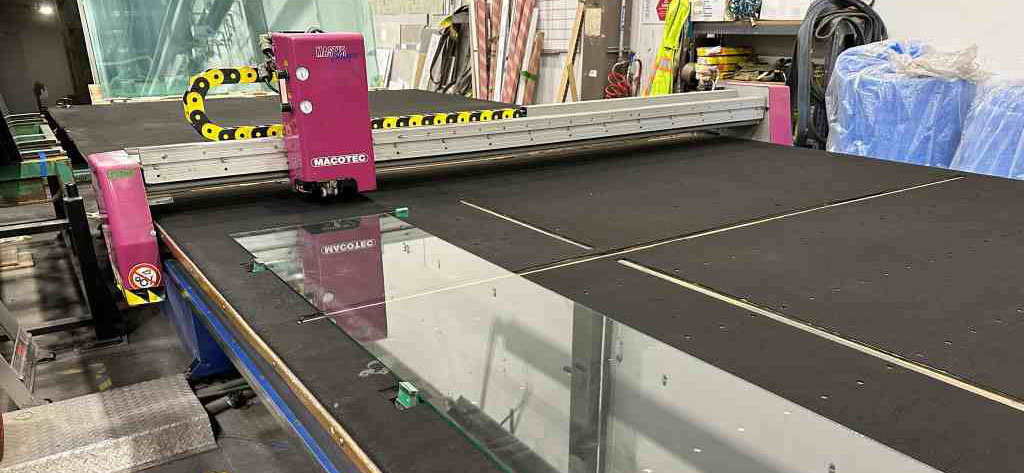Home » Blog » Precision in Glass cutting, Exploring CNC Glass Cutting and Its Machinery
Posted on : 15-05-2024 Author : Nevin

In the realm of glass fabrication, precision and accuracy are paramount. Whether crafting intricate designs for architectural marvels or creating bespoke glass furniture pieces, the demand for flawless cuts and intricate patterns has led to the rise of Computer Numerical Control (CNC) glass cutting. This innovative technology has revolutionized the glass industry, offering unmatched precision and efficiency in glass fabrication processes.
Understanding CNC Glass Cutting:
CNC glass cutting involves the use of computer-controlled machinery to accurately cut, shape, and engrave glass materials according to precise specifications. Unlike traditional manual cutting methods, which rely on hand-operated tools and templates, CNC glass cutting utilizes advanced software programs and automated machinery to execute complex cutting tasks with unparalleled precision.
The Process:
Design Creation: The process begins with the creation of a digital design or blueprint using specialized computer-aided design (CAD) software. This design serves as the blueprint for the desired glass product, specifying dimensions, shapes, and any intricate patterns or engravings.
Programming: Once the design is finalized, it is translated into machine-readable code using Computer-Aided Manufacturing (CAM) software. This code contains instructions for the CNC machine, guiding its movements and operations during the cutting process.
Machine Setup: With the program loaded, the glass sheet is securely mounted onto the CNC cutting table. The machine's cutting head, equipped with a diamond or carbide-tipped cutting tool, is positioned above the glass surface, ready to execute precise cuts according to the programmed instructions.
Cutting Operation: The CNC machine springs to life, executing a series of precise movements dictated by the programmed code. The cutting tool glides across the surface of the glass, following the predetermined path with remarkable accuracy. Depending on the complexity of the design, the machine may perform multiple passes to achieve the desired cut depth and precision.
Finishing Touches: Once the cutting operation is complete, the glass undergoes any necessary finishing processes, such as polishing, edging, or drilling. These final touches ensure that the glass meets the desired specifications and quality standards before being used in its intended application.
Machinery Used in CNC Glass Cutting:
CNC Cutting Table: The CNC cutting table serves as the foundation for the glass cutting process, providing a stable platform for the glass sheet and the cutting tool. These tables are equipped with precision motion control systems that enable smooth and accurate movements during cutting operations.
Cutting Head: The cutting head is the heart of the CNC glass cutting machine, housing the cutting tool and other essential components. It is responsible for translating the programmed instructions into physical movements, guiding the cutting tool across the surface of the glass with pinpoint accuracy.
Diamond or Carbide Cutting Tool: The cutting tool is the workhorse of the CNC glass cutting process, responsible for physically cutting through the glass material. Diamond or carbide-tipped cutting tools are commonly used due to their exceptional hardness and durability, allowing them to effortlessly slice through even the toughest glass materials.
CAD/CAM Software: CAD/CAM software plays a crucial role in CNC glass cutting, enabling designers to create intricate digital designs and translate them into machine-readable code. These software programs offer a range of powerful tools and features for designing, simulating, and optimizing cutting processes, ensuring maximum precision and efficiency.
Advantages of CNC Glass Cutting: